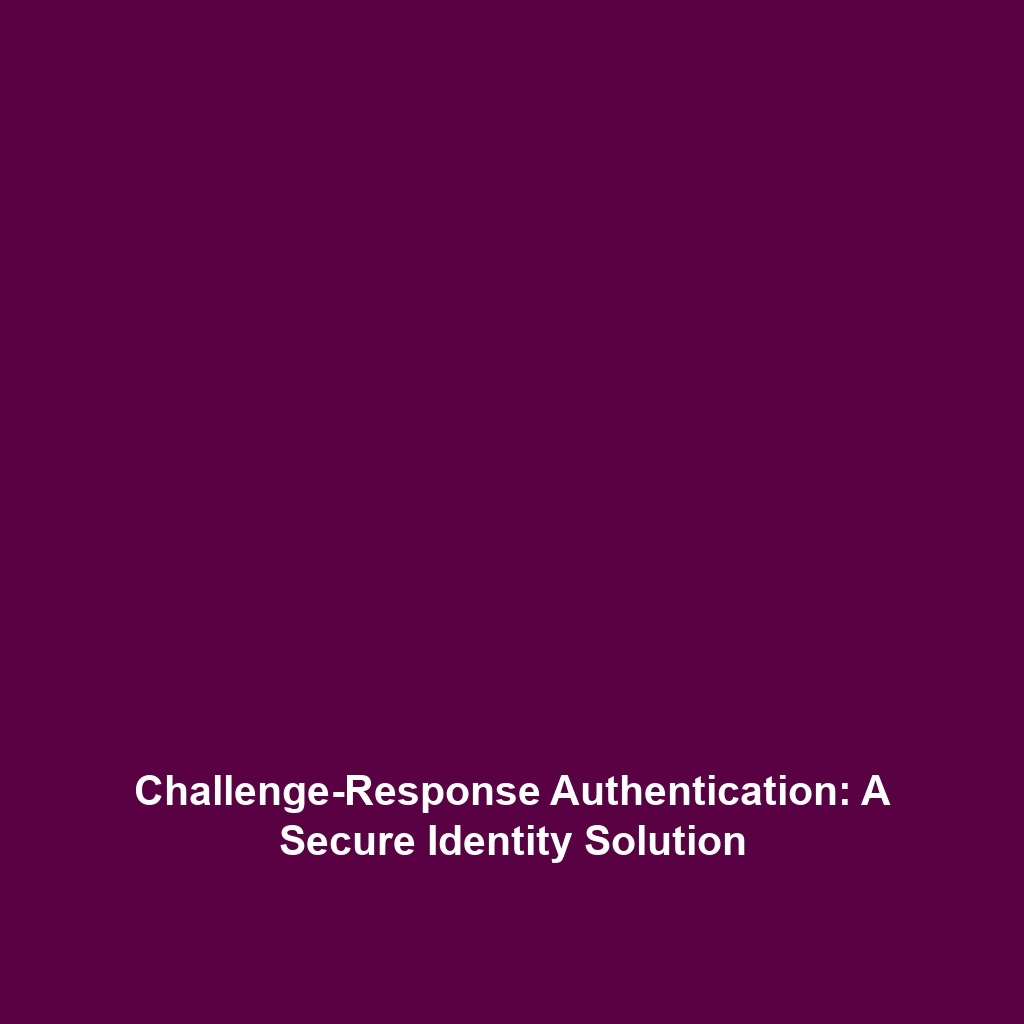Challenge-Response Authentication: A Secure Solution for Identity Verification
Introduction
In an era where digital security is paramount, Challenge-Response Authentication has emerged as a critical method for ensuring secure authentication. This cryptographic technique utilizes cryptographic challenges to verify a user’s identity, thus safeguarding sensitive information against unauthorized access. Within the broader context of Cryptography, this method plays a significant role in enhancing security protocols across various platforms. Given the increasing sophistication of cyber threats, understanding Challenge-Response Authentication is essential for anyone invested in digital security.
Key Concepts
Challenge-Response Authentication relies on several foundational concepts:
- Challenge Generation: The server generates a random challenge, typically a nonce (number used once), which is sent to the user.
- User Response: The user must compute a response using the challenge and a secret key, often through a cryptographic hash function.
- Verification: The server then verifies the response against its own calculation to authenticate the user.
This process ensures that even if an attacker intercepts the challenge, they cannot derive the secret key or forge an authentication response, thereby reinforcing the principles of authentication and integrity that are core to Cryptography.
How It Fits into Cryptography
Challenge-Response Authentication is a mechanism widely used to strengthen secure communications. It is particularly important in systems where passwords may be compromised, as it does not expose any static credentials during the authentication process. As a result, it mitigates risks associated with replay attacks and man-in-the-middle exploits.
Applications and Real-World Uses
The applications of Challenge-Response Authentication are vast and versatile:
- Online Banking: Financial institutions use this method to secure transactions and verify user identities.
- Remote Access Systems: Many VPNs and corporate networks utilize challenge-response mechanisms to allow secure access for remote employees.
- Two-Factor Authentication: Challenge-Response is often an integral part of two-factor authentication systems, adding an extra layer of security.
These examples illustrate how this approach is vital in ensuring secure authentication within the realm of Cryptography.
Current Challenges
Despite its advantages, there are challenges in implementing and studying Challenge-Response Authentication:
- Complexity in Implementation: Developing robust challenge-response systems can be complex and resource-intensive.
- Usability Concerns: Users may struggle with processes requiring multiple steps to verify their identity.
- Vulnerability to Certain Attacks: While it enhances security, poorly designed systems can still be susceptible to specific attacks such as replay or timing attacks.
These challenges indicate the need for continued research and improvement in the field of Cryptography.
Future Research and Innovations
Looking ahead, the future of Challenge-Response Authentication is promising, with innovative technologies poised to enhance its effectiveness:
- Quantum Cryptography: Research into quantum mechanisms may revolutionize challenge-response systems, making them even more secure.
- Artificial Intelligence: AI can be leveraged to create intelligent authentication systems that adapt to user behaviors and anomalies.
- Blockchain Technology: Integrating challenge-response authentication with blockchain could lead to tamper-proof identity verification solutions.
These breakthroughs will undoubtedly influence the landscape of Cryptography.
Conclusion
Challenge-Response Authentication stands out as a pivotal tool in securing user identities within the realm of Cryptography. By employing cryptographic challenges, it provides a robust solution to the ever-growing threats to digital security. Continued advancements and research into this area are vital for addressing existing challenges and leveraging new technologies. For more insights, explore our other articles on Cybersecurity and Cryptographic Methods.
